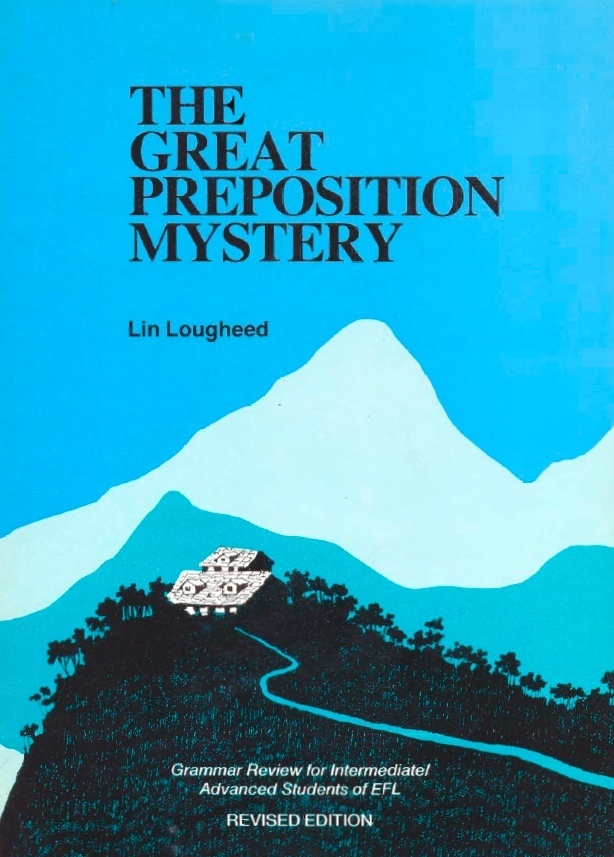
THE GREAT PREPOSITION MYSTERY
"The Great
The student gets
As the students work their way through the mystery story and the exercises in each chapter, they should make fewer and fewer errors. By the time the students solve the mystery, they should have solved the Great
Instructions and Notes to Teacher and Students
1. In every chapter of the mystery story, certain passages contain blanks where prepositions have been deleted. The students should fill in the blank with an appropriate preposition. In some cases, more than one
2. In most chapters of the mystery story, certain passages do not contain blanks. In these cases, the students should note all prepositions. However, they should not note words which are particles of two-word verbs or which function as adverbs or conjunctions. Look at the following sentences:
The gasoline tank blew up.
He didn't catch on to the joke.
The teacher kept on talking.
The
The underlined words are particles of two-word verbs and should not be circled as prepositions. Particles of two-word verbs cannot usually be separated from the main verb.
Look at the following sentences:
He fell off the cliff.
She came
He fell off.
She came in.
He fell off
In the first sentence, the word off functions as a preposition. In the second, the word off functions as an adverb. In the third, off functions as an adverb and of is a preposition. In the fourth sentence,
Look at the following sentences:
We started the exam after 9 o'clock.
We started the exam after hearing the bell.
We started the exam after the teacher told us to begin.
Everyone passed the exam but me.
I sat there looking at the exam but not reading it.
I took the exam but (I) didn't pass it.
In the first and second sentences, the word after functions as a preposition. Such words are prepositions when they are followed either by a noun phrase (9 o'clock) or by a gerund (hearing). They function as subordinate conjunctions when followed by a subject + verb (the teacher told). Similarly, the word but functions as a preposition in the fourth and fifth sentences and as a conjunction in the sixth sentence.
3. Answers separated by slash / or given in parentheses are suitable alternatives. Answers separated by a comma, indicate the answers for more than one blank in the item.
A Review of Prepositions
A preposition is used to connect nouns and noun structures to other structures in the sentence. A noun structure following the preposition is called the object of the
The object of the preposition can be a noun: We gave a
a pronoun: We gave a
a gerund: We thought about giving a present to them.
a noun clause: We thought about giving a present to whoever worked for us.
Placement of Prepositions
The
an adjective clause: This map shows the countries which we went to.
a noun clause: We forget which countries we went to.
An adjectival prepositional phrase is placed after the noun it modifies.
The book on the desk is mine.
The dog next door bothers me.
An adverbial prepositional phrase, like any adverb, may be placed anywhere in the sentence. Or it may be placed at the
end: I came at nine o'clock.
middle: He leaves in two hours to visit his friends.
beginning: On Monday, I have my French class.
Types of Prepositions
There are one- and two-word prepositions:
one-word: in, at, over, among
two-word: next to, instead of
There are times when prepositions can be used without objects. At such times, they no longer function as prepositions but become either (1) two-word verbs; (2) adverbs; or (3) conjunctions.
Two-word verbs (verb + particle)
Examples: bring up (raise) find out (discover)
call off (cancel) catch on (understand)
These combinations have idiomatic meanings and therefore are not discussed in this text. Examples, however, will be found in the mystery story.
Adverbs
Example: Did you take the elevator? No, we walked up.
Conjunctions
Examples: He came before I did. Please come before the meeting starts."









